Shenzhen special economic zone
description: first special economic zone in the People's Republic of China
67 results
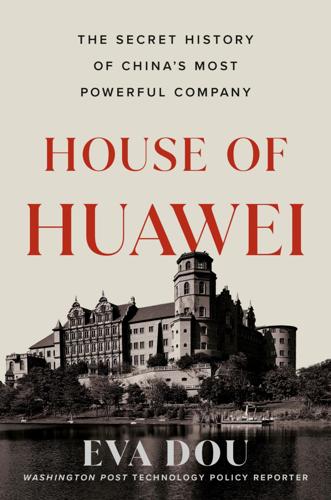
House of Huawei: The Secret History of China's Most Powerful Company
by
Eva Dou
Published 14 Jan 2025
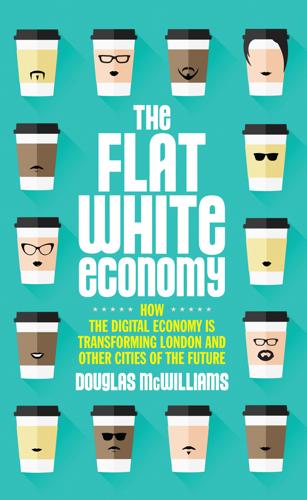
The Flat White Economy
by
Douglas McWilliams
Published 15 Feb 2015
Alibaba, which controls a near monopoly at 80% of China’s online shopping market, had an estimated market capitalisation value of $215 billion. In that sense it is the fourth biggest tech firm in the world, behind only Apple, Google and Microsoft – such is the scale of the Chinese consumer base. Yet whilst firms such as Alibaba and Huawei were founded in special economic zones such as Hangzhou and Shenzhen, Z-innoway subsumes a startup culture on a smaller scale that is more reminiscent of Silicon Roundabout in London and Silicon Valley. A key characteristic of the district is ‘startup cafes’ such as Garage Café and 3W Coffee, which host startups meetings and ‘accelerator’ programs in a setting not unlike the coffee shops in downtown Palo Alto.
…
article=1021&context=confpapers INDEX Accenture Fintech Innovation Lab ref1 accommodation ref1, ref2, ref3 cheap ref1, ref2, ref3 cramped ref1 displacement of ref1 proximity to amenities ref1 Advanced Card Systems ref1 advertising/marketing ref1, ref2 campaigns ref1 digital ref1 investment in ref1 online ref1, ref2, ref3, ref4 role of creativity in ref1 Aerob ref1 AirWatch ref1 Alibaba ref1, ref2 floated on NYSE ref1 Allegra Strategies ref1 Allford, Simon ref1 Allford Hall Monaghan Morris ref1 Amazon.com, Inc. ref1, ref2, ref3 Apple, Inc. ref1, ref2, ref3 development kits ref1 facilities of ref1 product lines of ref1 Argentina Buenos Aires share of GDP ref1 Association of London Councils ref1 AT&T Inc. ref1 Australia ref1 Sydney ref1 Austria Vienna share of GDP ref1 Bangladesh economy of ref1 Dhaka ref1 Bank of England investment guidelines ref1 BASF SE ref1 Bell Telephones personnel of ref1 Bennet, Natalie leader of Green Party ref1 bicycles ref1 fatalities associated with ref1 sales of ref1 use in commuting ref1 big data ref1 Birmingham Science Park Aston Innovation Birmingham Complex ref1 Bold Rocket ref1 bonuses ref1 use in property market ref1 Boston Consulting Group ref1, ref2 British Bars and Pubs Association ref1 British Broadcasting Corporation (BBC) BBC Scotland ref1 Brough, Graham ref1 Brown, Gordon ref1, ref2 Burkina Faso Ouagadougou ref1 Burt, Prof Ronald ref1, ref2 Cable and Wireless assets of ref1 Cameron, David economic policies of ref1, ref2 immigration policies of ref1 Canada ref1 Montreal ref1 Toronto ref1, ref2 Vancouver ref1 capital rate of return ref1, ref2 capitalism ref1, ref2, ref3 profits ref1 Catholicism ref1 Centre for Cities ref1, ref2 Centre for Economics and Business Research (Cebr) ref1, ref2, ref3, ref4, ref5, ref6, ref7, ref8, ref9 estimates of UK economic growth ref1 offices of ref1 personnel of ref1, ref2 Centre for Retail Research ref1, ref2 champagne sales figures ref1, ref2 Channel 4 ref1 China Beijing ref1, ref2, ref3 Haidian district ref1 economy of ref1 Golden Shield firewall (Great Firewall of China) ref1 government of ref1, ref2, ref3 Hong Kong ref1, ref2, ref3, ref4, ref5, ref6 Cyberport ref1 Hong Kong Stock Exchange ref1 People’s Liberation Army (PLA) ref1, ref2 special economic zones Hangzhou ref1 Shenzhen ref1 Zhongguancun Innovation Way (Z-innoway) ref1 China Mobile ref1 China Telecom ref1 China Unicom ref1 Cisco Systems facilities of ref1 cloud computing ref1, ref2 Coalition Government immigration policy of ref1, ref2 coffee shops culture of ref1 cyber cafes ref1 growth of market ref1 Commonwealth migration from ref1 Companies House ref1 Confederation of British Industry (CBI) ref1, ref2 personnel of ref1 Confucianism ref1 Conservative Party ref1 Cooper, Wayne ref1 Corporation of London ref1, ref2, ref3 Crafts, Nick ref1 creative economy ref1 Cridland, John leader of CBI ref1 Cromwell, Oliver ref1 Crow, Bob ref1 Daily Mail ref1 Danone ref1 Danticat, Edwidge ref1 Davis, Charles ref1 Decoded ref1 Deloitte ref1 deregulation of financial markets (1986) ref1 digital economy ref1, ref2, ref3, ref4 emergence of ref1, ref2 role of creativity in ref1 Dorling, Danny ref1 Dunne, Ronan CEO of O2 (UK) ref1 Durden, Tyler ref1 Economic Journal, The ref1, ref2 Economist, The ref1, ref2, ref3 Edinburgh University ref1 Eggers, Dave Circle, The (2013) ref1 Egypt Cairo ref1 share of GDP ref1 employment ref1 growth ref1 immigrant labour ref1 in FWE ref1, ref2, ref3, ref4 job creation ref1 low-skilled jobs ref1 public sector 1112 science, technology, engineering and mathematics (STEM) ref1 growth of ref1 shortages ref1 end user demand ref1 Engels, Friedrich ref1 Entrepreneurs for the Future (E4F) ref1 entrepreneurship ref1, ref2, ref3 e.Republic Center for Digital Government and Digital Communities Digital Cities award programme ref1, ref2 Esquire (magazine) ref1 European Economic Area (EEA) ref1 migrants from ref1 contribution to fiscal system ref1 migrants from outside ref1 contribution to fiscal system ref1 European Union (EU) free movement of labour in ref1 member states of ref1, ref2, ref3 taxation regulations ref1 Eurostar ref1 Eurozone ref1, ref2 Crisis (2009–) ref1, ref2, ref3 economy ref1 Facebook ref1, ref2, ref3, ref4 IPO of ref1 Falmouth University ref1 Fan, Donald Senior Director for Office for Diversity of Walmart ref1 FanDuel ref1 Farage, Nigel leader of UKIP ref1 feudalism ref1 financial services ref1, ref2, ref3, ref4, ref5 lifestyles associated with ref1, ref2 Financial Times (FT) ref1 FT Global Top 500 Companies ref1 Fintech ref1 First World War (1914–18) ref1 fiscal transfer ref1, ref2, ref3 net ref1 potential use to cover local deficits ref1 Flat White Economy (FWE) ref1, ref2, ref3, ref4, ref5, ref6, ref7, ref8, ref9, ref10, ref11, ref12, ref13, ref14, ref15, ref16, ref17 advantages of immigration for ref1, ref2, ref3 business model for ref1 development and growth of ref1, ref2, ref3, ref4, ref5, ref6, ref7, ref8, ref9 employment in ref1, ref2, ref3, ref4 shortages ref1 impact on UK economy ref1, ref2 model of ref1, ref2, ref3 replicating ref1-ref2 role of creativity in ref1 startups in ref1 business model ref1 Flat Whiters ref1 accommodation data for ref1 social culture of ref1 fashion ref1 nightlife ref1 transport ref1 technology used by ref1 Forbes (magazine) ref1 France ref1 education system of ref1 Paris ref1, ref2, ref3 share of GDP ref1 Paris-Sarclay ref1 creation of (2006) ref1 potential limitations of ref1 promotion of ICT in ref1 Forst and Sullivan ref1 France ref1, ref2 Freeman, Prof Christopher ref1 Fujitsu Ltd. ref1 Funding Circle ref1 Gates, Bill ref1 Germany ref1, ref2, ref3 Berlin ref1 economy of ref1 Glaeser, Edward ref1 Triumph of the City, The ref1 Global Financial Crisis (2007–9) ref1, ref2 Banking Crises (2008) ref1 impact on migration ref1 UK recession (2008–9) ref1 Global Innovation Index ref1 globalisation ref1, ref2, ref3 Glyn, Andrew ref1 Goodison, Sir Nicholas Chairman of the Stock Exchange ref1 Google, Inc. ref1, ref2, ref3, ref4, ref5, ref6, ref7, ref8 acquisitions made by ref1 development kits ref1 offices of ref1, ref2 Greater London Authority (GLA) ref1, ref2 Green Party members of ref1 Gröningen Growth and Development Centre ref1 Guardian, The ref1, ref2, ref3 Harbron, Rob ref1, ref2 Harrison, Andy Chief Executive of Whitbread ref1 Harvard Business School ref1 Harvard University Harvard Lab for Computer Graphics and Spatial Analysis ref1 HCL Technologies ref1 Heisnberg, Werner uncertainty principle ref1 Hewlett-Packard Company (HP) ref1 Huawei Technologies ref1 immigration ref1, ref2, ref3, ref4, ref5, ref6 advantages for FWE ref1, ref2, ref3 economic impact of ref1, ref2 impact on social cohesion ref1 impact on wages ref1 legislation ref1 access to state benefits ref1 quota systems ref1 non-EEA ref1, ref2 restrictions on ref1, ref2, ref3 Imperial College, London facilities of ref1 India ref1, ref2 Calcutta ref1 IT sector of ref1 Karnataka ref1 Bangalore ref1, ref2, ref3, ref4 Electronics City ref1 Mumbai ref1 inequality ref1 potential role of London in ref1, ref2 sources of wealth ref1 Infosys Ltd ref1 initial public offering (IPOs) ref1 innovation ref1, ref2, ref3, ref4, ref5, ref6, ref7, ref8 hubs ref1, ref2 independent ref1 investments in ref1 projects ref1 Institute for Public Policy Research ref1 intellectual property protection of ref1, ref2 Intel Corporation ref1, ref2, ref3 facilities of ref1 personnel of ref1 International Business Machines (IBM) ref1, ref2 facilities of ref1, ref2, ref3 personnel of ref1, ref2, ref3 internet usage ref1 investment ref1, ref2, ref3 advertising and marketing ref1 capitalising of ref1 in innovation ref1 process of ref1 Israel ref1, ref2 Defence Ministry ref1 Haifa ref1 tech sector of ref1 IT spending ref1, ref2 accounting for ref1 software ref1 Italy ref1 Frascati ref1 Rome ref1 ITC Infotech India Ltd ref1 Japan ref1 economy of ref1 Tokyo ref1 share of GDP ref1 Johnson, Boris Mayor of London ref1, ref2, ref3 Johnson Press plc ref1 Judaism ref1 Kaldor, Nicholas ref1 Keynes, John Maynard ref1 Economic Consequences of the Peace, The ref1 KPMG ref1 labour ref1 division of ref1 immigrant ref1, ref2, ref3, ref4 market ref1 shocks ref1 share of income ref1, ref2 supply of ref1, ref2, ref3, ref4 Labour Party ref1 immigration policies of ref1 Lai, Ian ref1 Laserfiche ref1 Lawson, Nigel ref1 Leeds Beckett University ref1 Level 39 ref1 Liberal Democrats immigration policies of ref1 lifestyles ref1 associated with financial services ref1 Livingstone, Ken ref1 Lloyds ref1 London School of Economics (LSE) ref1 MadRat games ref1 MagnetWorks Engineering ref1 Mahindra Satyam ref1 Mainelli, Michael Gresham Professor of Commerce ref1 Malaysia ref1 Kuala Lumpur ref1 Manchester Science Parks (MSP) ref1 market capitalisation ref1, ref2 market economy ref1 Marx, Karl ref1, ref2 Labour Theory of Value ref1 Marxism ref1 Massachusetts Institute of Technology (MIT) ref1 campuses of ref1 Technology Review ref1, ref2 MasterCard ref1 McAfee, Inc. ref1 McKinsey Global Institute ref1 McQueen, Alexander ref1 McWilliams, Sir Francis ref1 Pray Silence for Jock Whittington (2002) ref1 Medvedev, Dmitry ref1 technology policies of ref1 Metcalfe, Robert ref1 Metcalfe’s Law concept of ref1 Mexico ref1 Mexico City ref1 share of GDP ref1 Microsoft Corporation ref1, ref2, ref3, ref4 facilities of ref1 Future Decoded conference ref1 personnel of ref1 Windows (operating system) ref1 Migration Advisory Committee ref1 Miliband, Ed immigration policies of ref1 MindCandy ref1 Moshi Monsters ref1 offices of ref1 Mitsui Chemicals ref1 Mohan, Mukund CEO of Microsoft Ventures in India ref1 Mongolia Ulan Bator ref1 Moore, Gordon Earle Moore’s Law ref1 MphasiS ref1 National Institute of Economic and Social Research (NIESR) ref1, ref2 Netherlands Amsterdam ref1 network effects ref1 relationship with supereconomies of scale ref1 Network Rail offices of ref1 New Scientist ref1 New Statesman ref1 Nitto Denko ref1 Nokia Oyj ref1 O2 (Telefónica UK Limited) ref1 offices of ref1 personnel of ref1 Office of Communications (Ofcom) ref1 Olympic Games (2012) ref1, ref2 online shopping ref1, ref2 Organisation for Economic Cooperation and Development (OECD) ref1, ref2, ref3, ref4 Osborne, George ref1 Outblaze ref1 Pareto Principle concept of ref1 Passenger Demand Forecasting Council ref1 PayPal ref1 PCCW ref1 Poland accession to EU (2004) ref1 Pollock, Erskine ref1 Procter & Gamble Co. ref1 property markets ref1, ref2 commercial ref1, ref2 housebuilding ref1, ref2 house/property prices ref1, ref2, ref3, ref4 property crisis (2007) ref1 residential ref1 use of bonuses in ref1 public spending ref1, ref2, ref3 Barnett formula ref1 relationship with taxation ref1 Qualcomm facilities of ref1 Reinartz, Werner ref1 Republic of Ireland ref1 research and development (R&D) ref1, ref2, ref3 definitions of ref1, ref2 expenditure ref1, ref2 hubs ref1, ref2 industrial ref1 Research Council for the Arts and Humanities ‘Diasporas, Migration and Identities’ ref1 Rogers, Everett Diffusion of Innovations (1962) ref1 Russian Federation ref1 economy of ref1 Defence Ministry ref1 Moscow ref1, ref2 Skolkovo Innovation Centre ref1, ref2 Saffert, Peter ref1 sales and advertising ref1 Sarkozy, Nicolas technology policies of ref1 Scottish Media Group (STV) ref1 Second World War (1939–45) Blitz, The (1940–1) ref1 shared accommodation ref1 Silicon Canal ref1 Silicon Roundabout ref1, ref2, ref3, ref4, ref5 Silicon Valley ref1, ref2, ref3, ref4, ref5, ref6 role of US government defence spending in development of ref1 social culture of ref1 Silva, Rohan Senior Policy Advisor to David Cameron ref1 Singapore ref1, ref2, ref3, ref4 government of ref1 Research, Innovation and Enterprise Plan (RIE 2015) ref1 research centres of ref1 A*Star Biopolis ref1 Fusionopolis ref1 Campus for Research Excellence and Technological Enterprise (Create) ref1 CleanTech Park ref1 Singapore Science Park ref1 Tuas Biomedical Park ref1 skills drain ref1 Skyscanner ref1 small- and medium-sized businesses (SMBs) ref1 small- and medium-sized enterprises (SMEs) ref1 Small Business Service Household Survey of Entrepreneurship ref1 Smith, Adam Wealth of Nations, The ref1 Smith, Michael Acton founder of MindCandy ref1 Social Democratic Party (SDP) formation of (1981) ref1 social media ref1 restrictions on ref1 Solow, Robert ref1 South Africa Johannesburg share of GDP ref1 South East Regional Assembly ref1 South Korea Seoul ref1 share of GDP ref1 Spain Barcelona ref1 Ibiza ref1 Sprint Corporation ref1 startups ref1 business models of ref1 in FWE ref1 Stigler, George ref1 supereconomies of scale concept of ref1 relationship with network effects ref1 Sweden Stockholm share of GDP ref1 Tata Consultancy Services ref1 taxation ref1, ref2, ref3, ref4, ref5 allowance ref1 corporation ref1 EU regulations ref1 National Insurance ref1, ref2, ref3 regional variation of ref1 relationship with public spending ref1 Tech City ref1, ref2, ref3 technology clusters ref1, ref2, ref3 identification of ref1 Techstars/Barclays ref1 telecommunications ref1 Thatcher, Margaret ref1, ref2 Thile, Peter ref1 trade unions ref1 Transport for London (TfL) ref1, ref2 UK Independence Party (UKIP) members of ref1, ref2 United Kingdom (UK) ref1, ref2, ref3, ref4, ref5, ref6, ref7, ref8, ref9, ref10 Bath ref1 Birmingham ref1, ref2 Bristol ref1 Cambridge ref1 Cheshire ref1 Civil Service ref1 Department for Business, Innovation and Skills ref1, ref2 Department for Transport ref1 economy of ref1, ref2, ref3, ref4, ref5, ref6, ref7, ref8, ref9 contribution of creative industries to ref1 growth of ref1, ref2, ref3, ref4, ref5 Edinburgh ref1 GDP per capita ref1, ref2, ref3, ref4, ref5, ref6 Glasgow ref1, ref2 media clusters in ref1 government of ref1, ref2, ref3 Index of Multiple Deprivation ref1 ‘Innovation Report 2014’ ref1 Hounslow ref1 labour market of ref1 Leeds ref1, ref2, ref3 London ref1, ref2, ref3, ref4, ref5, ref6, ref7, ref8, ref9, ref10, ref11, ref12, ref13, ref14, ref15, ref16, ref17, ref18, ref19, ref20, ref21, ref22, ref23 business sector of ref1 Camden ref1, ref2 City Fringes ref1, ref2 City of London ref1, ref2, ref3, ref4, ref5, ref6, ref7 cultural presence of ref1 economy of ref1, ref2, ref3, ref4, ref5, ref6, ref7, ref8, ref9, ref10 migrant labour in ref1 expansion of ref1, ref2, ref3 GDP per capita ref1, ref2 GVA of ref1, ref2, ref3 Hackney ref1, ref2, ref3 Haringey ref1, ref2 Islington ref1, ref2 Old Street ref1, ref2, ref3, ref4, ref5, ref6 share of national GDP ref1 Shoreditch ref1, ref2, ref3, ref4 Tower Hamlets ref1 transport infrastructure of ref1 Crossrail ref1 Westminster ref1, ref2, ref3 Manchester ref1, ref2, ref3 Midlands ref1 Milton Keynes ref1, ref2 Newbury ref1 Newcastle ref1 Northern Ireland ref1 Northampton ref1 Office for National Statistics (ONS) ref1 Oxford ref1 Parliament House of Commons ref1 House of Lords ref1 pub industry of ref1 Reading ref1 Salford ref1 Slough ref1 United States of America (USA) ref1, ref2, ref3, ref4 Baltimore, MD ref1 Boston, MA ref1, ref2 Buffalo, NY ref1 Cambridge, MA ref1 Chicago, IL ref1 Columbus, OH ref1 Detroit, MI ref1 economy of ref1 government of ref1, ref2 Irving, TX ref1 Jacksonville, FL ref1 Los Angeles, CA ref1 Minneapolis, MN ref1 Nashville, TN ref1 New York City, NY ref1, ref2, ref3, ref4 New York Stock Exchange (NYSE) ref1 Palo Alto, CA ref1 Portland, OR ref1, ref2 Raleigh, NC ref1 Salt Lake City, UT ref1 San Diego, CA ref1 San Francisco, CA ref1 Seattle, WA ref1, ref2 Washington DC ref1 Winston-Salem, NC ref1 University of Chicago faculty of ref1, ref2 University of London ref1 University of Sussex faculty of ref1 venture capital ref1, ref2 Visa facilities of ref1 Vodafone offices of ref1 wages ref1, ref2, ref3, ref4, ref5, ref6 depression of ref1, ref2 growth of ref1 impact of immigration on ref1 low ref1, ref2 Walmart personnel of ref1, ref2 Waze acquired by Google ref1 We Are Apps ref1 Whitbread Costa Coffee ref1 personnel of ref1 Wikipedia ref1 Wilson, Harold ref1 administration of ref1 Wipro Technologies ref1 Wired (magazine) ref1 Woolfe, Steven UKIP spokesman on migration and financial affairs ref1 World Bank ref1 Xiaomi ref1 Yorkshire Post, The ref1 ZopNow ref1

Cities in the Sky: The Quest to Build the World's Tallest Skyscrapers
by
Jason M. Barr
Published 13 May 2024
But this is all part of the plan from Beijing. The story of Shenzhen begins when Deng Xiaoping took the reins of the Communist Party and set about retooling China’s failed planned economy. In 1979, the central government formally created the municipality of Shenzhen and, following that, its Special Economic Zone (SEZ). “Shenzhen originated from attempts of post-Mao leadership to undo the economic paralysis of China’s economy during the Cultural Revolution of 1966–76,” political scientist Jonathan Bach writes. “A major challenge lay in acquiring badly needed foreign capital and technology from the class enemy without appearing to betray socialist principles.”
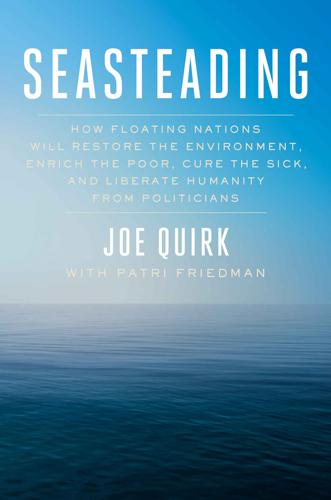
Seasteading: How Floating Nations Will Restore the Environment, Enrich the Poor, Cure the Sick, and Liberate Humanity From Politicians
by
Joe Quirk
and
Patri Friedman
Published 21 Mar 2017
Remember this answer the next time somebody predicts large nations will invade seasteads. China didn’t attack. It learned and adapted. Chinese leaders were so impressed by the Hong Kong experiment, leader Deng Xiaoping announced China’s new “open door” policy in December 1978. In 1980 it designated four “special economic zones,” or SEZs, which curled along the crescent of China coastline. The first was Shenzhen, established just across the river from Hong Kong, followed quickly by Zhuhai, Shantou, and Xiamen. Sudden growth in these SEZs was so startling, only four years later, former Communist strongmen designated fourteen coastal cities to be SEZs, triggering the construction of modern container ports, which would come in handy as China began to produce and export the goods that drove a cornucopia of consumer goods for the West.
…
He travels the world speaking publicly to world leaders, business leaders, and those working for poverty alleviation. With his background in education, Strong knows how to bypass the facts and figures and tell by showing. He displays a photo of Shenzhen, China, in 1980, near the outset of a special economic zone development. It looks like a crowded ghetto of squat tenements. Then he displays a photo of Shenzhen in 1995, showing the results of fifteen years of SEZ growth: fabulous shining skyscrapers and a city that appears so futuristic that viewers ask if it’s been Photoshopped. It’s real. At the time of its designation as an SEZ, Shenzhen was a small fishing village, lacking even a traffic light.
…
Flourishing in the shadow of a murderous tyranny that could crush it at any time, the political experiment produces a humanitarian singularity that shows no signs of pausing in its ascent. We just described what actually happened in the coastal village of Shenzhen, China, after it was declared a special economic zone (SEZ) in 1979. And every time it needed to expand to absorb the stampede of eager immigrants, Shenzhen leaders had to ask the great nation of China for more territory, to which China repeatedly said yes. Today Shenzhen manufactures 90 percent of computer keyboards, 90 percent of computer mice, and 70 percent of computer screens sold globally.
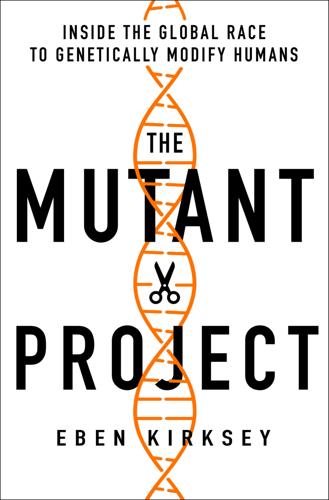
The Mutant Project: Inside the Global Race to Genetically Modify Humans
by
Eben Kirksey
Published 10 Nov 2020
See also DNA; MiSeq; Sanger sequencing sexual orientation genetics and living in the closet See also bisexuality; gay; queer Sharp, Matt (dancer and HIV activist) advocate for gene-editing research arrested for civil disobedience dancing career gene-editing experimental volunteer Storm the NIH protest Shelley, Mary (science fiction author) Shenzhen, China Apple factories BGI and China National GeneBank conference as consumer utopia Foxconn and HarMoniCare Hospital He, Jiankui, in history of landscape and infrastructure SoFun Land housing complex as special economic zone start-up ethos in See also Southern University of Science and Technology (SUSTech) Shenzhen speed. See also Yang, Fan Shenzhen Stock Exchange sickle cell anemia Signal (encrypted communications app) Sills, Eric Scott (gynecologist, charged with murder) skin color. See also blackness; NCKX5 gene; SLC24A5 gene; #transracial; whiteness Skloot, Rebecca (author) SLC24A5 gene (skin color) See also genes; skin color Soccer Genomics.
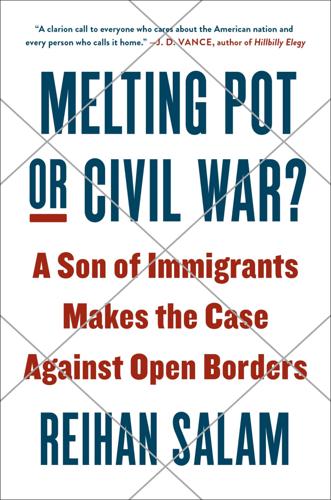
Melting Pot or Civil War?: A Son of Immigrants Makes the Case Against Open Borders
by
Reihan Salam
Published 24 Sep 2018
For years, the economist Paul Romer has championed the idea of “charter cities,” that is, new cities that are established with rules and institutions carefully designed to foster economic growth and upward mobility for the world’s poor.23 As an example, he points to the experience of Shenzhen, a teeming metropolis of more than ten million that as recently as 1980 was little more than a fishing village. To capture some of the dynamism of neighboring Hong Kong, the Chinese government established a special economic zone (SEZ) in Shenzhen that, over time, became a hub of labor-intensive manufacturing, and that has since evolved into a font of entrepreneurial growth. Of course, not all of China’s SEZs were so wildly successful, and one can’t expect SEZs created elsewhere to match Shenzhen. Nevertheless, Shenzhen offers an inspiring example, and capturing even a fraction of its success could do a great deal to boost incomes.
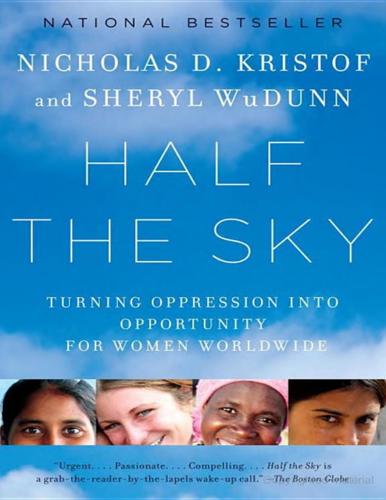
Half the Sky: Turning Oppression Into Opportunity for Women Worldwide
by
Nicholas D. Kristof
and
Sheryl Wudunn
Published 7 Sep 2008
—LU XUN, “ANXIOUS THOUGHTS ON ‘NATURAL BREASTS’” (1927) We’ve been chronicling the world of impoverished women, but let’s break for a billionaire. Zhang Yin is a petite, ebullient Chinese woman who started her career as a garment worker, earning $6 a month to help support her seven siblings. Then, in the early 1980s, she moved to the special economic zone of Shenzhen and found a job at a paper trading company partly owned by foreigners. Zhang Yin learned the intricacies of the paper business, and she could have stayed and risen in the firm. But she is a restless, ambitious woman, buzzing with entrepreneurial energy, so she struck out for Hong Kong in 1985 to work for a trading company there.

The Undercover Economist: Exposing Why the Rich Are Rich, the Poor Are Poor, and Why You Can Never Buy a Decent Used Car
by
Tim Harford
Published 15 Mar 2006
The noted Indian economist, Jagdish Bhagwati, described his own governments’ policies from the 1960s to the 1980s as “three decades of illiberal and autarkic policies”— in other words, the government sat hard on the market and did its best to prevent trade and investment. China, on the other hand, worked hard to attract foreign investors and to make the most of the links with Hong Kong and its other neighbors. The plan was to create “special economic zones,” such as Shenzhen, where the normal rules of the command economy would not apply to foreign investors. At the same time, the infrastructure of the special economic zones could be improved quickly. That method perfectly complemented China’s • 248 • H O W C H I N A G R E W R I C H connections with Hong Kong, Macao, and Taiwan: the zones were exclusively in Guandong Province, next to Hong Kong and Macao, and Fujian, next to Taiwan.
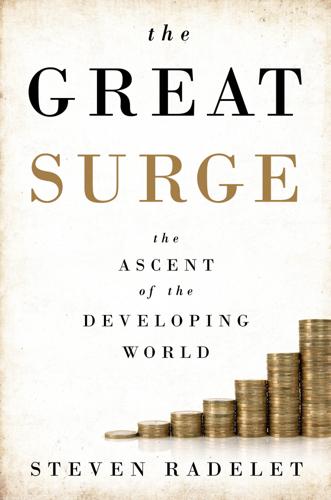
The Great Surge: The Ascent of the Developing World
by
Steven Radelet
Published 10 Nov 2015
Her family had lived there for centuries, scratching out a minimal existence through farming on the dry, wind-blown soil of the Loess Plateau. Not long after Huan was born, with the Chinese economy beginning to boom along the coastal areas, her parents decided to take a huge risk and leave their ancestral home in search of higher wages and greater economic opportunities in the special economic zone of Shenzhen. They had to leave Huan behind with her grandparents, which was a major sacrifice for everyone. Fortunately, her parents were successful in getting good jobs and earning some money, so they could send her to a better primary school and to the only college in the region. Huan excelled as a student at Longdong College.

Arriving Today: From Factory to Front Door -- Why Everything Has Changed About How and What We Buy
by
Christopher Mims
Published 13 Sep 2021
All this water is the reason Vietnam has always been so productive agriculturally. While it sometimes gets in the way, it’s also one reason the country is now booming economically. From 1993 to 2016, the proportion of Vietnamese who lived in poverty dropped from 51 percent to 10 percent. Contemporary Vietnam is like Japan in the 1960s, or China’s “special economic zone” of Shenzhen, now the world’s preeminent electronics manufacturing hub, in the late ’90s. Cheap labor is being employed by foreign companies, many of them Chinese, Korean, or Japanese, to do the manufacturing that has become too expensive within the borders of their own countries. As rising wages in the United States inspired companies to outsource to the original cohort of “Asian tigers,” so too have the economic booms of those countries raised standards of living and led workers to demand higher wages.

Smart Cities: Big Data, Civic Hackers, and the Quest for a New Utopia
by
Anthony M. Townsend
Published 29 Sep 2013
As John Kasarda and Greg Lindsay explain in their 2011 book Aerotropolis, Songdo was originally conceived as “a weapon for fighting trade wars.” The plan was to entice multinationals to set up Asian operations at Songdo, where they would be able to reach any of East Asia’s boomtowns quickly by air. It was to be a special economic zone, with lower taxes and less regulation, inspired by those created in Shenzhen and Shanghai in the 1980s by premier Deng Xiaoping, which kick-started China’s economic rise.15 But in an odd twist of fate, Songdo now aspires to be a model for China instead. The site itself is deeply symbolic. Viewed from the sky, its street grid forms an arrow aimed straight at the heart of coastal China.
…
Louis, Mo., 36, 51, 78 Samsung, 26 Sandy, Oreg., 289 San Francisco, Calif., 12, 226–30, 255–56, 292 BART system of, 255–57 Summer of Smart in, 227–30 Sante Fe Institute, 312 SantRam, Mohit, 155 Sarasa, Daniel, 217–23 satellite communications, 6 Savage, Sean, 156 Saxenian, AnnaLee, 172 SCADA, 266–68 Scantlebury, Roger, 259–60 Schank, Hana, 202 Schimmel, John, 166 Schmidt, Eric, 180 Schmidt, Terry, 126–27, 132 Schwittay, Anke, 177 science fiction, 6 Scientific American, 231 Scout, 233 SCR-300, 51 Selvadurai, Naveen, 146, 150 Seoul: Digital Media City of, 28, 219 growth and development of, 25–26 Seoul Development Institute, 25 Shalizi, Cosma, 312–14 Shanghai: Expo 2010 in, 47–48, 172 special economic zone in, 24 Sharon, Michael, 147 Shelter Associates, 185–86 Shenzhen, special economic zone in, 24 Shirky, Clay, 232–35, 250 SickCity, 157–58 Siemens, 8, 34, 39–40, 43, 267 first public electric street lamps by, 35 Germany’s first inter-city telegraph by, 38 Infrastructure & Cities division of, 38 plans for smart grid development by, 38–39 SIMATIC software of, 268 test for smart grid technology by, 37 Silicon Valley, 44 Homebrew Computer Club in, 153 People’s Computer Company in, 153, 155 SimCity, 89 simulation, 75 as agent-based, 87 for cities, 78–79, 85–90 Sinclair, Upton, 318 Singapore, 224, 279 ad for smart traffic systems in, 7 Sivak, Bryan, 203 Skilling, David, 224 smart buildings, 22–24, 26–27, 28–29 smart technologies in, 23–24 smart cities, 64, 215, 222–23, 256–58 automation technologies in, 318–19 battles over, 194–99, 294 best investment of, 288–89 “bugs” in, 252–58 competing goals of, 15–16 corporate competition for, 8 creating standards for, 249 dangers of, 72 definition of, 15 democratic participation in, 9, 193 designers of, 303–4 finances in development of, 30–31 future developments of, 29, 72, 299, 311 global network of, 250 grassroots technologies for, 153–58, 167 ineffective duplication of technologies for, 245–48 infrastructure for, 49–50, 194, 262, 265, 269, 299 “killer apps” for, 159, 319 mass urban surveillance in, 272–74, 293 neighborhood dashboards in, 306–7 normal accidents in, 13 “people-centered” approach to, 282–85 projected costs for, 31 promise of greater efficiency in, 31–32 public transit for, 204–5, 235 recommendations for future of, 282–320 sensors of, 68, 72, 306, 316 “set asides” for, 300–301 “slow data” for, 315–20 slow pace of sustainable change for, 279–80 stages of remodeling into, 32 “urban operating system” for, 249 vulnerability of technology in, 259–70 as worsening income gaps, 12–13 smart electricity, 24 potential innovations in, 41–42 Siemen’s plans for, 38 social media potential in, 41 ways to even out peaks in, 39–41 smart meters, 38–40 smartphones, 177–81, 271 demand for interactive urban services on, 200–207 situated software for, 232 software ecosystem for, 234 smart radio, 55 smart technology: “citizen card” as, 221–22 “City Protocol” of, 249 civic labs needed for, 301–2 computerized maps of slums with, 185–89 “convergence” network of, 27 in curbing energy use, 279 for economic development, 184–89 enabling infrastructure with, 27 exclusion of poor from, 173–77, 189–93, 203–4 as fueling urban conflict, 11–12 “g-cloud” as, 170, 289 inefficiency in, 278–79 as means rather than ends, 285–87 need for resilience in, 298–300 as opportunity to rethink government, 10 outsourcing of, 295 as “para-poor” vs.

Empty Vessel: The Story of the Global Economy in One Barge
by
Ian Kumekawa
Published 6 May 2025

Radical Technologies: The Design of Everyday Life
by
Adam Greenfield
Published 29 May 2017
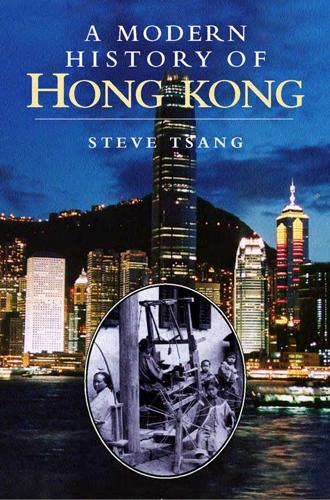
A Modern History of Hong Kong: 1841-1997
by
Steve Tsang
Published 14 Aug 2007
As the policy of economic refor m pursued under Deng Xiaoping deepened in the PRC in the 1980s, a new symbiotic economic relationship emerged between it and Hong Kong. Hong Kong went beyond being the key entrepôt for the new China t r ade and the financial centr e to suppor t this tr ade and f o r eign investments on the mainland. It had taken the lead in building factories, first in the Special Economic Zone of Shenzhen and then more widely in Guangdong province. The entrepreneurs of Hong Kong were among the first to make a success of industrial investments on the Chinese mainland. Their success did not come quickly or easily, as many of the problems that plagued major pioneering investors in industrial production in the PRC from the West affected them too.
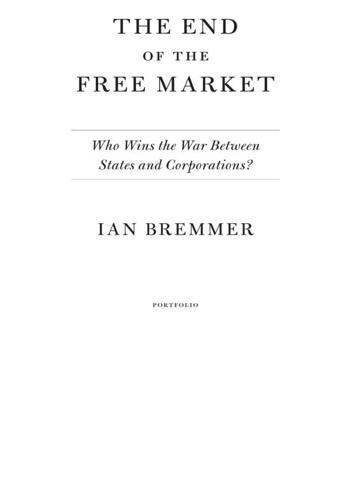
The End of the Free Market: Who Wins the War Between States and Corporations?
by
Ian Bremmer
Published 12 May 2010
Deng and Zhao developed other policies that encouraged the growth of private commerce. In the countryside, township and village enterprises bloomed. In cities, small privately owned businesses began to flourish. Entrepreneurialism expanded, and average incomes began to rise. Along the coast, the special economic zones helped cities like Shenzhen and Guangzhou transform almost overnight from stagnant backwaters into modern manufacturing powerhouses. Behind all this experimentation was a determination to go slow, to avoid the kind of “shock therapy” that might destabilize the country. The state tinkered with various sets of incentives and restrictions to determine what worked and what didn’t.
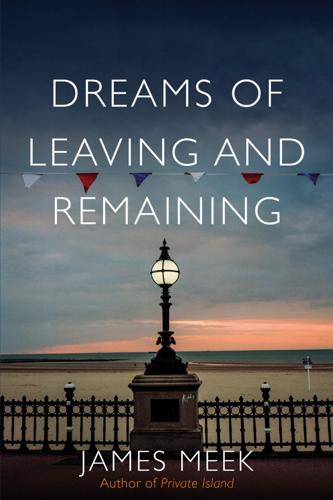
Dreams of Leaving and Remaining
by
James Meek
Published 5 Mar 2019

The Long Good Buy: Analysing Cycles in Markets
by
Peter Oppenheimer
Published 3 May 2020
In parallel, about this time China was also beginning to open up its economy and embark on reforms. Following the landmark 1978 Chinese reforms that started the ‘household responsibility system’ in the countryside, giving some farmers ownership of their products for the first time, the first ‘special economic zone’ was formed in Shenzhen in 1980. This concept allowed for the introduction and experimentation of more flexible market policies. Although the reforms were slow and not without controversy, by 1984 it became permissible to form individual enterprises with fewer than eight people and, by 1990, a year after the fall of the Berlin Wall, the first stock markets were opened in Shenzhen and Shanghai.

What We Owe the Future: A Million-Year View
by
William MacAskill
Published 31 Aug 2022
One particularly interesting idea for promoting cultural diversity of societies is that of charter cities: autonomous communities with laws different from their surrounding countries that serve as laboratories for economic policies and governance systems. For example, in 1979 Deng Xiaoping created a special economic zone around the city of Shenzhen,126 giving it more liberal economic policies than the rest of China. Average yearly income grew by a factor of two hundred over forty years.127 Its success inspired broader economic reforms across China, which, over the course of the last forty years, have lifted hundreds of millions of people out of poverty.128 Charter cities are often promoted by those who want to see more economically liberal policies.
…
One way of understanding this, without committing oneself to the spooky metaphysics of objective moral truths, is to think of the morally correct view as the moral view that you would come to endorse if you had perfect information and unlimited time to reflect, could experience a diversity of lives, and were exposed to all the relevant arguments. 126. A common myth is that Shenzhen grew from a small fishing village to a huge city over the course of a few decades, but this isn’t true. In 1979, Shenzhen was a market town with some industry and a population of 310,000 (Du 2020, Chapter 1). Special economic zones have been tried in other places, but in spite of some successes like Shenzhen, on average, they have not grown faster than their host country (Bernard and Schukraft 2021). 127. In 1980, per capita income was $122, and in 2019, it was $29,498 (Charter Cities Institute 2019; China Daily 2020; Yuan et al. 2010, 56). 128. Roser and Ortiz-Ospina 2017; Yuan et al. 2010. 129.

Super Continent: The Logic of Eurasian Integration
by
Kent E. Calder
Published 28 Apr 2019
It increased its scientific and technical workforce from 60,000 when the modernization began to 400,000 less than five years later.12 With political conditions increasingly stable, Deng’s approach steadily broadened beyond an initial emphasis on national self-reliance to include sub- Eurasia in the Making 53 stantial foreign borrowings. In December 1978, for example, China arranged a $1.2 billion sovereign loan from a consortium of British banks; by midApril the People’s Republic (PRC) had received or arranged for $10 billion in foreign loans.13 Five Special Economic Zones, or SEZs, (Shenzhen, Zhuhai, and Shantou in Guangdong, plus Xiamen in Fujian and the entire island of Hainan) were established, each of which had power to negotiate with foreign firms on the Yugoslav-Romanian model, thus blending socialist and capitalist systems.14 Although never officially designated as an SEZ, Tianjin was picked as a “coastal development area” and opened in the mid-1980s.
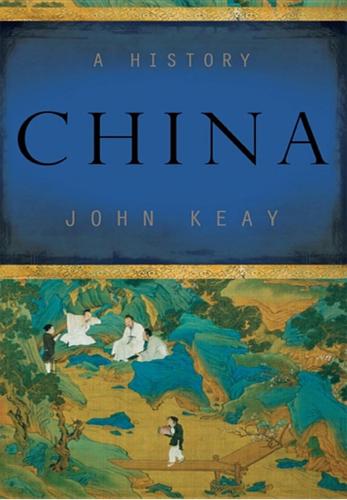
China: A History
by
John Keay
Published 5 Oct 2009
In 1977 he was reinstated in the Politburo and in 1978 he sidelined Hua Guofeng to launch the reform programme that would shape contemporary China. A year later he was in America being feted by Ronald Reagan and anticipating China’s becoming a superpower; a year after that, while authorising the creation of the first Special Economic Zone at Shenzhen (near Hong Kong), he lit on the formula that would turn China into ‘the workshop of the world’. The five years 1977–82 launched the country on a new trajectory as revolutionary in its way as any in its long history. The Cultural Revolution had attacked ‘the Four Olds’ (old ideas, culture, customs, and habits); Deng’s revolution promoted ‘the Four News’ (or ‘Four Modernisations’: agriculture, industry, defence and technology); the retrospective/negative made way for the forward-looking/positive.
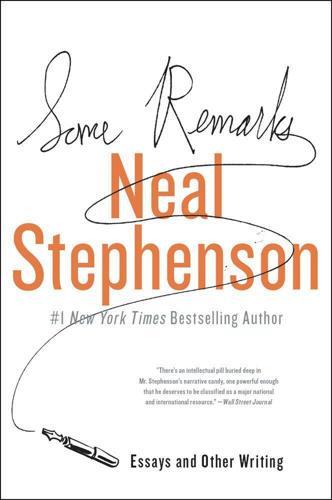
Some Remarks
by
Neal Stephenson
Published 6 Aug 2012

The Content Trap: A Strategist's Guide to Digital Change
by
Bharat Anand
Published 17 Oct 2016
CHINESE VIRTUAL GIANTS Six thousand miles southeast of Oslo lies Shenzhen, one of China’s fastest-growing cities. Three decades ago it was a farming and fishing village with a few thousand people. Today it is an eleven-million-person metropolis. Most of its growth was triggered by the creation of a Special Economic Zone in 1979. Shenzhen is now a manufacturing hub, the financial center of southern China, and the home of companies with globally recognized brands, like Huawei and ZTE. Despite this engineered growth, the most famous company headquartered there arose from homegrown entrepreneurs Pony Ma and Zhang Zidong.

Uncanny Valley: A Memoir
by
Anna Wiener
Published 14 Jan 2020
I asked how he planned to scale up, and regretted it as soon as he gave me the answer: shipping containers. To live in? I asked. What about community? People didn’t come from nowhere. What about the local economy? I was starting to get mad. I was starting to show my cards. “Ideally, it would be a special economic zone,” he said. “You know Shenzhen?” I knew Shenzhen: a high-gloss, highly surveilled city where rapid economic growth encouraged both luxury development and child-labor abuses; a citizenry partaking of modernity and progress, under dictatorial control. An epiphenomenon of authoritarian capitalism. Did he know Shenzhen?

Connectography: Mapping the Future of Global Civilization
by
Parag Khanna
Published 18 Apr 2016
Successful economic strategy today must therefore include strategic city-level investments to absorb the masses and catapult societies into modernity. SEZs have proven to be enormous catalysts for connectivity and growth across underdeveloped countries. In 1979, Deng Xiaoping designated Shenzhen, then a fishing village north of Hong Kong, as China’s first special economic zone. Since that time, Shenzhen has grown into a thriving international hub of fifteen million people with a per capita GDP a hundred times larger than three decades ago.3 That same year, Mauritius opened its first textile SEZ and launched itself on a 6 percent growth path and all but eliminated unemployment.
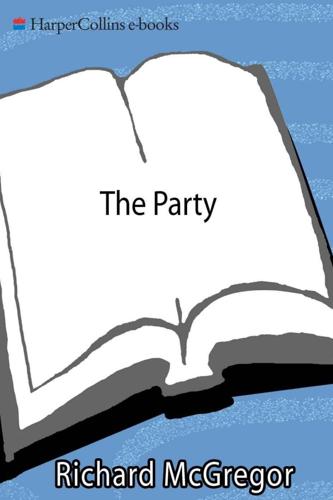
The Party: The Secret World of China's Communist Rulers
by
Richard McGregor
Published 8 Jun 2010
According to this formulation, every jurisdiction is a company, and every company a jurisdiction–all of them with powerful incentives to compete against each other. Beijing has been smart enough to harness local dynamism to test new ideas, and then feed back the successful experiments into the national policy grid. The market economy was built on allowing special economic zones in places like Shenzhen in the early eighties to pursue liberal investment policies, while the rest of the country remained stuck with central planning. Policies on health, pensions and land reform have all been stress-tested at local level in recent years before being expanded nationally. The golden age of decentralization under communist rule–the period from 1978 to 1993–was also the apogee of private sector growth and wealth generation.
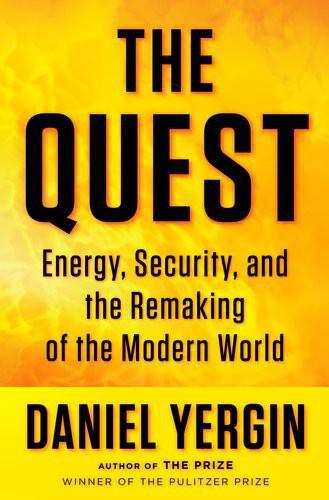
The Quest: Energy, Security, and the Remaking of the Modern World
by
Daniel Yergin
Published 14 May 2011
So did the bloody 1989 confrontation with students in Tiananmen Square. In the aftermath, amid the indecision of the leadership, the efforts to continue market reform stagnated. Seeking to jump-start the faltering reforms, Deng, in January 1992, launched his last great campaign—the nanxun, or “southern journey.” This trip showcased the booming Special Economic Zone of Shenzhen, which was becoming a manufacturing center for exports, and sought, fundamentally, to erase the stigma from making money. His message was that “the only thing that mattered is developing the economy.” It was during this tour that Deng also made a stunning revelation—he had never actually read the bible of communism, Karl Marx’s Das Kapital.

Age of the City: Why Our Future Will Be Won or Lost Together
by
Ian Goldin
and
Tom Lee-Devlin
Published 21 Jun 2023
First for reform was agriculture, where land was decollectivized and the ‘Household Responsibility System’ was introduced, shifting responsibility for profits and losses back to farmers. This set the foundations for a rapid acceleration in improvements in cereal yields, as farmers became incentivized to adopt more efficient practices. Next was industry. Rather than opening the economy to foreign influence all at once, the Chinese leadership established ‘Special Economic Zones’ in four coastal cities – Shenzhen, Shantou, Zhuhai and Xiamen – in which foreign multinationals were offered tax incentives and a more business-friendly operating environment in exchange for establishing export manufacturing facilities. The rapid success of these early experiments led to the designation of a raft of ‘Open Coastal Cities’ in 1984 that integrated China into global supply chains.
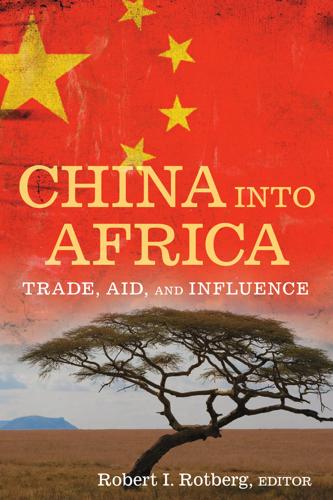
China into Africa: trade, aid, and influence
by
Robert I. Rotberg
Published 15 Nov 2008
In 1984, fourteen coastal cities were opened to outside investment, and in 1985 the same was done for coastal areas extending the economic zones of the Yangtze River Delta, Pearl River Delta, and South Fujian Triangle Delta. The designated SEZs had previously contributed less than 1 percent of China’s GDP, with a labor force engaged primarily in the agricultural sector. 07-7561-4 ch7.qxd 9/16/08 4:17 PM Page 139 Special Economic Zones 139 In 1980, Shenzhen’s GDP was RMB 270 million; Xiamen’s, RMB 375 million; and Shantou’s, RMB 889 million. In 1987, the GDP in Xiamen was RMB 640 million, and it was RMB 5.6 billion in Hainan.2 However, these areas played a limited role in the country’s economic development: the provinces of Guangdong, Fujian, and Hainan covered 0.35 percent of the country’s land and had a population of 9.79 million—just 0.8 percent of the country’s population.3 Above all, the zones were located along China’s east coast, taking advantage of potential links between Shenzhen and its neighbor Hong Kong, Zhuhai and nearby Macao, Xiamen, and Taiwan, while also providing easier access to foreign markets.

Super Pumped: The Battle for Uber
by
Mike Isaac
Published 2 Sep 2019
The Communist Party took pride in promoting and ensuring the success of Chinese companies on Chinese soil. Under Xi Jinping, the government had invested hundreds of millions in state-backed venture funds, which seeded a wave of startups, giving China the fastest growing economic sector in history. It had created so-called “special economic zones” in cities like Shenzhen, fostering Chinese innovation and startup incubation. The West still maintained global tech dominance, but of the top twenty technology companies in the world measured by market cap, nine of them were Chinese. Government control of the internet meant the Party could play kingmaker, choosing to regulate selectively based on what it felt was beneficial to the state.

McMafia: A Journey Through the Global Criminal Underworld
by
Misha Glenny
Published 7 Apr 2008
From the gentle agricultural pastures of northern Hong Kong, you can now cross into a 12 million–strong giant of hypermalls, factories, tower blocks, and work, work, work. Shenzhen on the Pearl River Delta is the gateway to the new China, having formed a profoundly dynamic symbiotic relationship with Hong Kong. One of the original special economic zones, not only has Shenzhen become the blazing vanguard of China’s future, but it has even rescued the former British colony from decline by throwing it a lifeline of economic opportunity. If there is a market niche, the entrepreneurs of Shenzhen will sniff it out and fill it. Mo Bangfu, a Chinese journalist who has traveled to Chinatowns throughout the world, explained how it works.
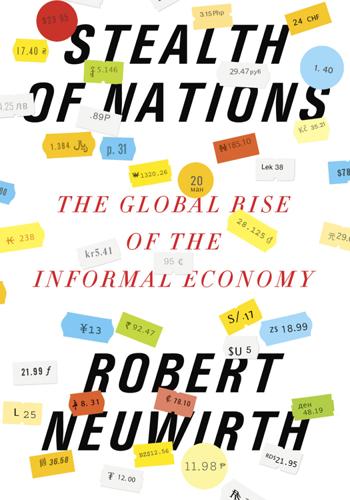
Stealth of Nations
by
Robert Neuwirth
Published 18 Oct 2011

Nomad Century: How Climate Migration Will Reshape Our World
by
Gaia Vince
Published 22 Aug 2022
Romer’s idea is that the citizens of the charter city would benefit from good governance, safety and wealth; the host nation would receive taxes, plus the benefits of having a well-developed economic hub in their country; and the governing nation would get investment opportunities and comparatively cheap labour and resources. The idea isn’t so far from the concept of a ‘special economic zone’, which rapidly transformed cities including Shenzhen in China and Dubai in the United Arab Emirates. Essentially, these are areas of a nation that operate special business policies and laws with the aim of attracting foreign investment, and increasing trade and employment. Singapore and Hong Kong are similar success stories that became rich on the back of better legal systems, less corruption, stronger rule of law and more competent administration.
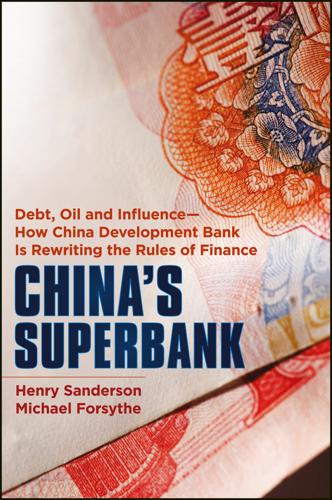
China's Superbank
by
Henry Sanderson
and
Michael Forsythe
Published 26 Sep 2012

World Cities and Nation States
by
Greg Clark
and
Tim Moonen
Published 19 Dec 2016

The New Geography of Jobs
by
Enrico Moretti
Published 21 May 2012
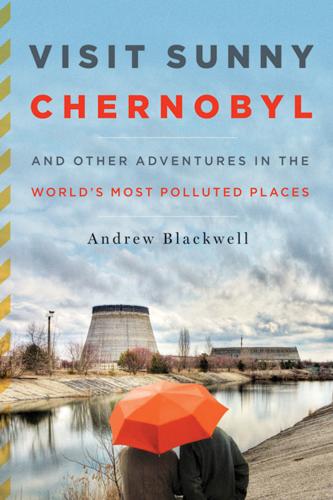
Visit Sunny Chernobyl: And Other Adventures in the World's Most Polluted Places
by
Andrew Blackwell
Published 22 May 2012
If my town were world famous as a warren of poisonous bottom-feeding, I’d probably be pissed off, too, when people wandered into my workshop with cameras. Whatever the source of the bad vibes, Guiyu sounded unfriendly. I had heard stories of journalists being screamed at, chased, pelted with bricks. Guiyu isn’t the only weirdly specialized place in Guangdong Province. Only two hundred miles down the coast is the “special economic zone” that is the city of Shenzhen, one of the most concentrated areas of electronics manufacturing in the world. (It was to companies in Shenzhen, Mr. Han said, that he sold his recycled components.) Shenzhen is home, for instance, to the famous “Foxconn City,” the giant complex where iPhones and a million other things are built.

Aerotropolis
by
John D. Kasarda
and
Greg Lindsay
Published 2 Jan 2009
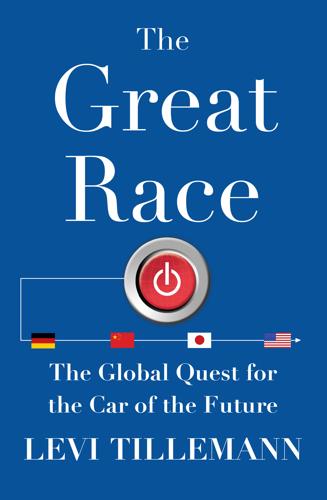
The Great Race: The Global Quest for the Car of the Future
by
Levi Tillemann
Published 20 Jan 2015
Receiving his bachelor’s degree from the Central South Institute of Technology, Wang gained acceptance to the Beijing Non-Ferrous Research Institute, which had a strong program in battery science, and obtained his master’s degree there. Like the director of CNOOC’s battery company, Lishen, Wang was asked to start a state-owned battery company, in this case to be spun off from its parent research center and established in Shenzhen—China’s supercharged southern Special Economic Zone. But Wang did not stay long. He led the government venture for only about a year before abruptly exiting. Shenzhen is a frenetically capitalistic environment and you might say that Wang got bitten by the entrepreneurial bug. Wang saw an underserved market that could be used as a catapult into the global economy, and he wanted to profit from it. BYD’s early years are filled with contradictions.
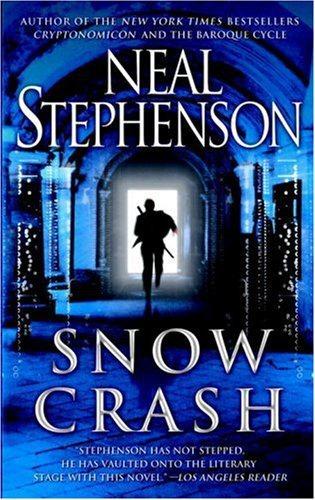
Snow Crash
by
Neal Stephenson
Published 15 Jul 2003
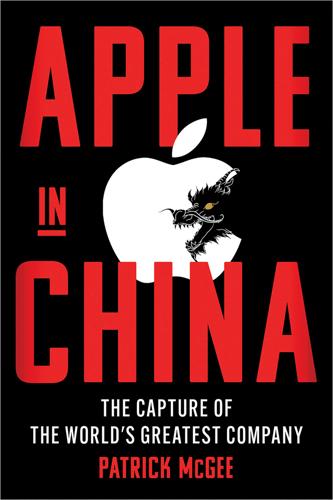
Apple in China: The Capture of the World's Greatest Company
by
Patrick McGee
Published 13 May 2025
As early as 1984, President Reagan was calling China “a so-called Communist country,” suggesting that as the country planted the seeds of economic reform, the flower of political reform would bloom. In 1980, Shenzhen was a fishing village of fewer than 70,000 people. But as a special economic zone just across the harbor from Hong Kong, Shenzhen and the area around it underwent a metamorphosis. “By the late 1980s, the entire 104-mile route from Hong Kong to Guangzhou was lined on both sides with factories,” according to the late Ezra Vogel, a Harvard scholar and the biographer of Deng Xiaoping. By 1990 the city of Shenzhen had a population of 1.7 million; in the early 2000s, it had grown to around 7 million.

Red Flags: Why Xi's China Is in Jeopardy
by
George Magnus
Published 10 Sep 2018
China’s relative backwardness at the time was suitably illustrated by the inspirational but ageing Deng Xiaoping, who had been dismissed and then rehabilitated by the Party in earlier years, and who was trying to revive reforms that had been put on hold in the wake of the Tiananmen Square disturbances in 1989.1 He urged citizens to strive to match the economic growth rates of China’s Asian neighbours, and, as Henry Kissinger recalled, he extolled the ‘four big items’ it was essential to make available to consumers in the countryside: a bicycle, a sewing machine, a radio and a wristwatch.2 Under the slogan ‘Reform and Opening Up’, Deng articulated and inspired China to become modern, to prioritise science and technology, to encourage intellectuals to return home, and possibly to become a ‘moderately developed country’ within a hundred years. Under his leadership, the 1980s brought significant reforms of agriculture, measures to help spur the growth in private firms, and the creation of special economic zones (SEZs) in rural backwaters, such as Shenzhen, designed to attract foreign investment and bolster private enterprise and financial liberalisation.3 Based on these experiences and on opening up to both the US and other countries for political and economic exchanges, China kicked on in the 1990s, now under the leadership of Deng’s successors, Party General Secretary and President Jiang Zemin and his able premier Zhu Rongji.

Lonely Planet China (Travel Guide)
by
Lonely Planet
and
Shawn Low
Published 1 Apr 2015
Buses to Wuzhishan (¥20, two hours) depart at 8am, 11.45am and 3.30pm. Guangzhou’s main train station has trains that stop over at Shaoguan East station (Shaoguan Dongzhan ¥38, 2½ hours). Buses to Wuzhishan leave at 7.45am, 11.15am and 3.15pm. Shenzhen %0755 / Pop 10.5 million One of China’s wealthiest cities and a Special Economic Zone (SEZ), Shenzhen draws a mix of business people, investors and migrant workers to its golden gates. It’s also a useful transport hub to other parts of China. You can buy a five-day Shenzhen-only visa (¥160 for most nationalities, ¥469 for Brits; cash only) at the Luohu border ( GOOGLE MAP ; Lo Wu; h9am-10.30pm), Huangang (h9am-1pm & 2.30-5pm) and Shekou (h8.45am-12.30pm & 2.30-5.30pm).
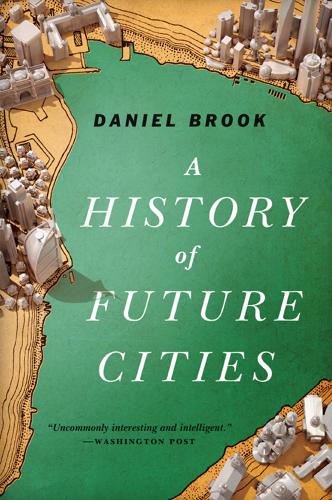
A History of Future Cities
by
Daniel Brook
Published 18 Feb 2013

Chinese Spies: From Chairman Mao to Xi Jinping
by
Roger Faligot
Published 30 Jun 2019

Stakeholder Capitalism: A Global Economy That Works for Progress, People and Planet
by
Klaus Schwab
Published 7 Jan 2021
Having been inspired by the city-state's example, he pursued a new economic development model for China as well: the Reform and Opening-Up, starting in 1979. The kernel of the economic turnaround in this model lay in attracting FDI from some of China's neighbors, including Hong Kong, and allowing these investors to set up businesses in Special Economic Zones (SEZs) on various stretches along the populous Guangdong (Canton) coastline in Southern China. Shenzhen, north of the Sham Chun River, was one of them. The SEZs were a sandbox for private business to operate in China. Elsewhere in the country, rules on private ownership, incorporation, and profits remained restricted for another number of years.
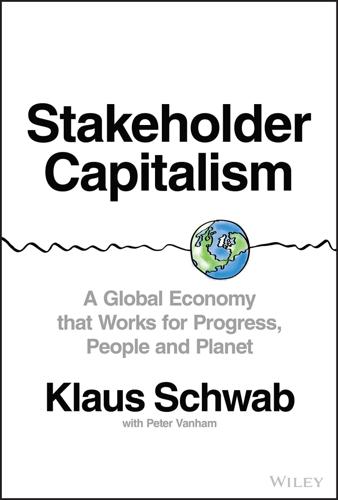
Stakeholder Capitalism: A Global Economy That Works for Progress, People and Planet
by
Klaus Schwab
and
Peter Vanham
Published 27 Jan 2021
Having been inspired by the city-state's example, he pursued a new economic development model for China as well: the Reform and Opening-Up, starting in 1979. The kernel of the economic turnaround in this model lay in attracting FDI from some of China's neighbors, including Hong Kong, and allowing these investors to set up businesses in Special Economic Zones (SEZs) on various stretches along the populous Guangdong (Canton) coastline in Southern China. Shenzhen, north of the Sham Chun River, was one of them. The SEZs were a sandbox for private business to operate in China. Elsewhere in the country, rules on private ownership, incorporation, and profits remained restricted for another number of years.

Boom and Bust: A Global History of Financial Bubbles
by
William Quinn
and
John D. Turner
Published 5 Aug 2020
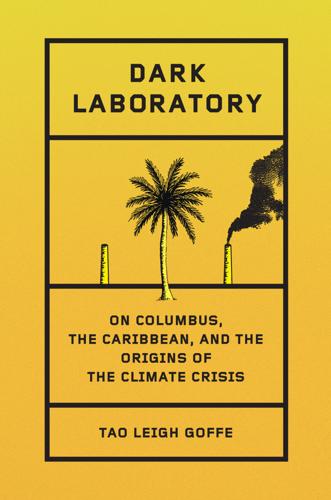
Dark Laboratory: On Columbus, the Caribbean, and the Origins of the Climate Crisis
by
Tao Leigh. Goffe
Published 14 Mar 2025

We Are All Fast-Food Workers Now: The Global Uprising Against Poverty Wages
by
Annelise Orleck
Published 27 Feb 2018

The Rise of the Network Society
by
Manuel Castells
Published 31 Aug 1996
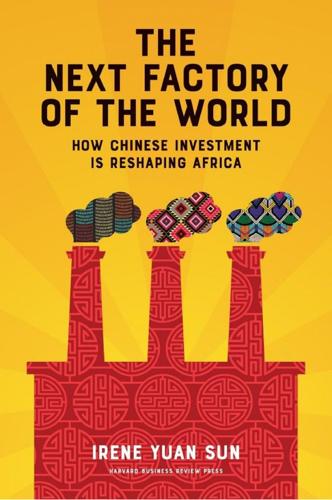
The Next Factory of the World: How Chinese Investment Is Reshaping Africa
by
Irene Yuan Sun
Published 16 Oct 2017
See Douglas Zhihua Zeng, “Global Experiences with Special Economic Zones: Focus on China and Africa,” Investing in Africa Forum, Addis Ababa, Ethiopia, February 2015, http://documents.worldbank.org/curated/en/810281468186872492/Global-experiences-with-special-economic-zones-focus-on-China-and-Africa. 7. Tim Maughan, “The Changing Face of Shenzhen, the World’s Gadget Factory,” Vice, August 19, 2015, http://motherboard.vice.com/read/beyond-foxconn-inside-shenzhen-the-worlds-gadget-factory. 8. Sheriff Balogun, “Ogun to Reposition Quandong Free Trade Zone,” This Day Live, June 18, 2012. 9. “Customs Generates N2 bn in Four Months in Ogun,” NaijaMotherland, June 8, 2015, http://www.nigeriannewspapers.today/customs-generates-n2-bn-in-four-months-in-ogun/.
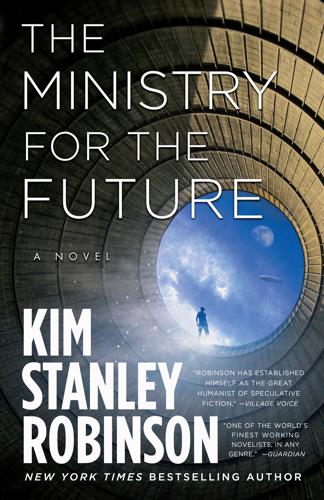
The Ministry for the Future: A Novel
by
Kim Stanley Robinson
Published 5 Oct 2020
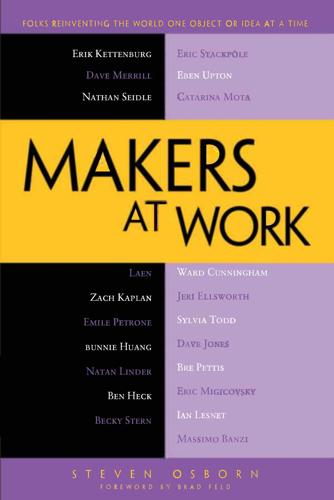
Makers at Work: Folks Reinventing the World One Object or Idea at a Time
by
Steven Osborn
Published 17 Sep 2013

Capitalism and Its Critics: A History: From the Industrial Revolution to AI
by
John Cassidy
Published 12 May 2025
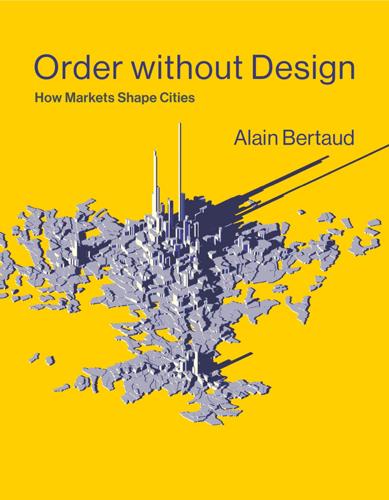
Order Without Design: How Markets Shape Cities
by
Alain Bertaud
Published 9 Nov 2018
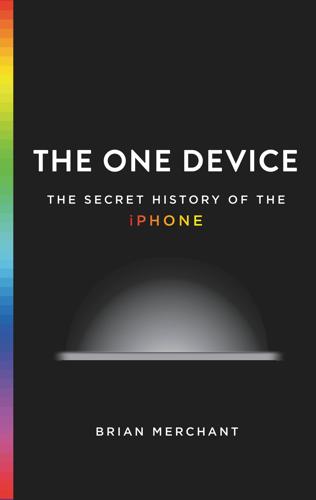
The One Device: The Secret History of the iPhone
by
Brian Merchant
Published 19 Jun 2017

Freedom
by
Daniel Suarez
Published 17 Dec 2009

Earth Wars: The Battle for Global Resources
by
Geoff Hiscock
Published 23 Apr 2012
Meanwhile, China’s paramount leader Deng Xiaoping (who died in 1997) had reinvigorated the reform process at the beginning of the 1990s, and his new team led by President Jiang Zemin, joined later by Premier Zhu Rongji, was presiding over a long period of 8 percent or better growth that catapulted China’s economy into the major league. The special economic zones that began in the early 1980s with the sleepy fishing village of Shenzhen, just across from Hong Kong on the Chinese mainland, were beginning to deliver on their trade and investment potential. In 2000, the city of Shenzhen—by then its population swollen past 10 million people—marked Deng’s role as a “great planner and contributor” to its development, unveiling a 6 m bronze statue in Lianhua (Lotus) Mountain park that shows Deng in a purposeful pose.

The Fourth Revolution: The Global Race to Reinvent the State
by
John Micklethwait
and
Adrian Wooldridge
Published 14 May 2014
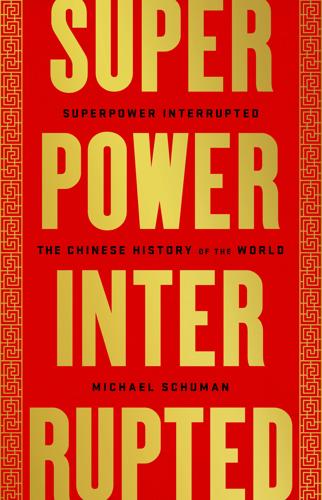
Superpower Interrupted: The Chinese History of the World
by
Michael Schuman
Published 8 Jun 2020
The idea harks back to the old Canton system through which the Qing had both benefited from and controlled foreign trade. It also reminded some conservatives of the foreign “concessions” granted in the infamous “unequal treaties.” Deng, though, instantly approved. Three months later, the central government sanctioned four initial “special economic zones,” all conveniently placed to absorb investment from China’s richer neighbors: in Shenzhen (across the border from posh British Hong Kong), Xiamen (across the strait from wealthy Taiwan), Zhuhai (next to Macau), and Shantou (also on the Guangdong coast). China was open for business once again. US President Jimmy Carter and China’s paramount leader Deng Xiaoping forged a partnership in a 1979 summit in Washington that underpinned the success of Beijing’s capitalist reforms and the country’s economic rejuvenation.

Behemoth: A History of the Factory and the Making of the Modern World
by
Joshua B. Freeman
Published 27 Feb 2018
Rather, they see mass manufacturing as a stage to go through and leave behind in achieving modernity. Chinese officials still see a role for mass production in raising living standards; they hope to hold on to lower-end, lower-paid manufacturing by moving it into poorer interior regions. But in wealthier parts of the country, including pioneer special economic zones, the push is to move beyond basic assembly-line production. In Shenzhen, the epicenter of the explosion of Chinese industrial giantism, older factories are being knocked down to build upscale residential and commercial buildings.70 Seen more as a necessity than a triumph, giant Chinese and Vietnamese factories are devoid of the heroic overtones associated with earlier large-scale industrial projects or with modern Chinese infrastructure projects like the Three Gorges Dam or the skyscrapers, bridges, and high-speed rail lines that have remade the landscape.
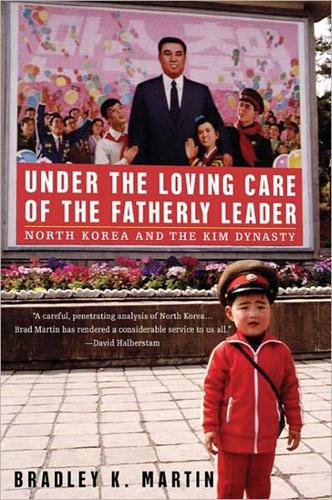
Under the Loving Care of the Fatherly Leader: North Korea and the Kim Dynasty
by
Bradley K. Martin
Published 14 Oct 2004

The Future Is Asian
by
Parag Khanna
Published 5 Feb 2019
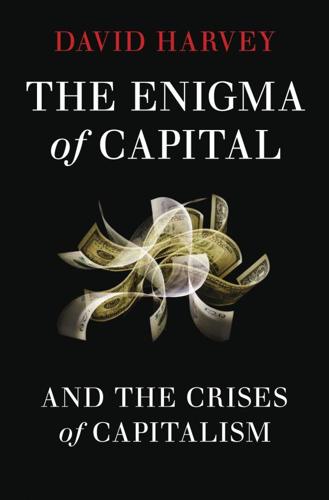
The Enigma of Capital: And the Crises of Capitalism
by
David Harvey
Published 1 Jan 2010
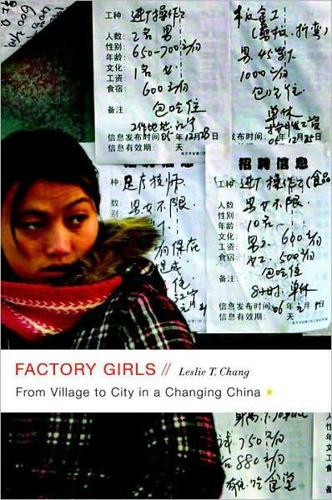
Factory Girls: From Village to City in a Changing China
by
Leslie T. Chang
Published 6 Oct 2008

The Billionaire Raj: A Journey Through India's New Gilded Age
by
James Crabtree
Published 2 Jul 2018
There was controversy too about the large expanse of land onto which our plane touched down an hour later, at an airfield built by Adani’s company. A sign in purple letters above the terminal read: “Welcome to Adani Ports and SEZ.” India had begun developing special economic zones—or SEZs for short—during the 2000s, inspired by the trade-friendly enclave set up in Shenzhen by Communist Party leader Deng Xiaoping in 1980, whose exporting industries helped to kick off China’s own economic transformation. Most of the Indian zones flopped, although Adani’s did better, a fact its owner put down to canny management.7 Critics, including Congress leader Rahul Gandhi—Sonia Gandhi’s son, and the latest in the Nehru–Gandhi dynasty to lead his party—pointed to different factors.
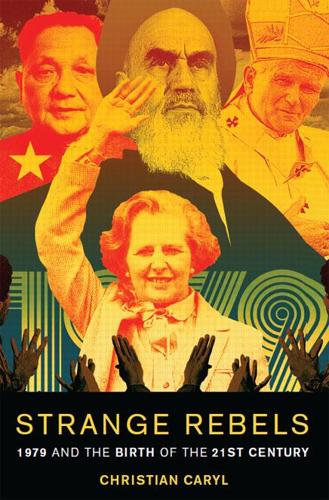
Strange Rebels: 1979 and the Birth of the 21st Century
by
Christian Caryl
Published 30 Oct 2012